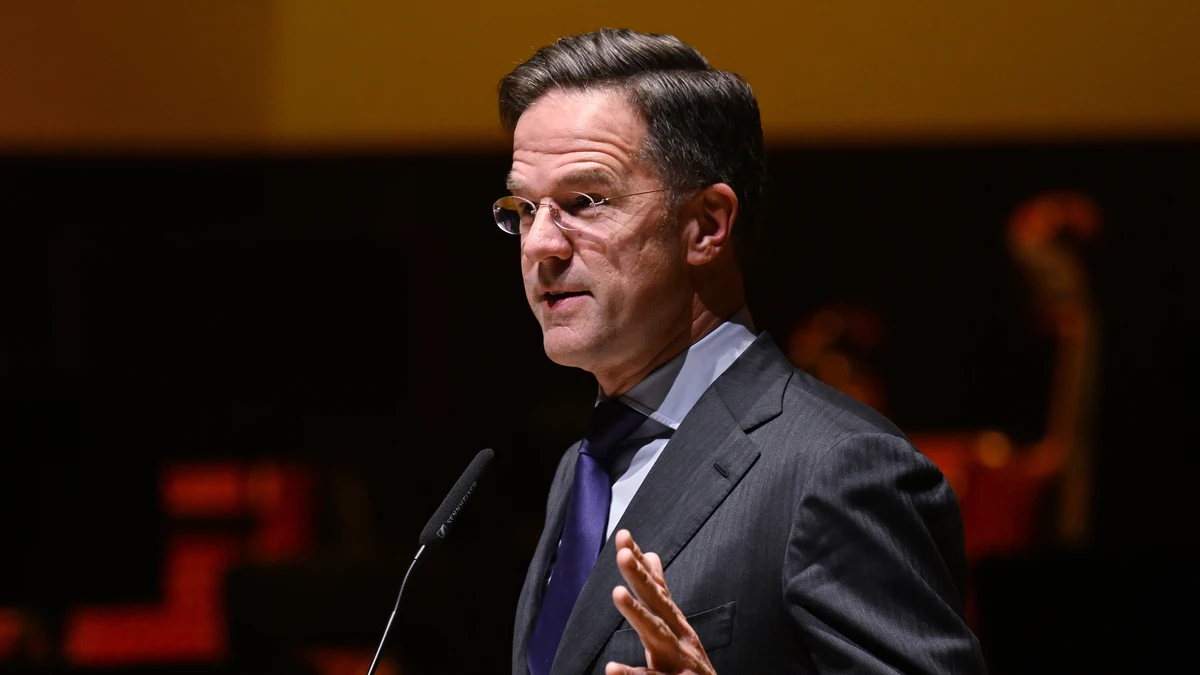
The Romanian president, Klaus Iohannis, indicated this Thursday to the Supreme Council of National Defense (CSAT) of his country that he has informed NATO that withdraws his candidacy for the position of general secretary of the Alliancewhich paves the way for the Dutchman Mark Rutte to occupy that position.
With this announcement, The acting Prime Minister of the Netherlands becomes the only candidate to lead NATO and will be elected, as planned, in July at the Alliance summit in Washington.
Iohannis, who had announced his candidacy last March, stressed today that his country supports Rutte’s candidacy. In recent days, other countries in the region, which were initially opposed to the Dutchman’s candidacy, such as Slovakia and Hungary, finally gave their approval to Rutte.
The Prime Minister of Hungary, the ultranationalist Viktor Orbán, announced on Tuesday that after the recent agreement with NATO to not have to join allied activities in Ukraine, he has decided to support Rutte as the next secretary general. Also the Slovak president, Peter Pellegrini, announced on Tuesday that he would support Rutte, who thus has the unanimous support of the 32 NATO allied countries.
Mark Rutte, from political chameleon to NATO Secretary General
In the short distance, Mark Rutte He is accessible, close, friendly and modest, and in politics, he has established himself as a character resistant to any scandal, a skilled negotiator and a chameleon capable of navigating complex landscapes, as evidenced in recent months by gaining the support of his biggest detractors to aspire to Secretary General of NATO.
His only opponent, Romanian President Klaus Iohannis, has withdrawn his candidacy today, leaving Rutte clear in his aspiration to succeed Jens Stoltenberg, and the ambassadors to NATO are expected to confirm his appointment as the new head next week.
He will be the fourth Dutchman to hold the position, after Dirk Stikker, Joseph Luns and Jaap de Hoop Scheffer. But Rutte did not always have it all with him, especially due to the resistance of the Hungarian Viktor Orbán, with whom he has clashed on numerous occasions over Hungarian policies towards homosexuality and judicial reforms.
Orbán even said that “the Dutch guy” “hates” him and Rutte promised to “bring Hungary to its knees” over homophobic legislation, so he promised to make things difficult for him. If Rutte has demonstrated anything in his almost 14 years as Dutch Prime Minister, it is his ability to reach ingenious deals with rivalsregardless of ideology or enmities.
He resolved tensions with Orbán with a letter in which he “took note” that his statements “have caused discontent” in Hungary and, without apologizing or retracting, allowed Orbán to score a victory before his Hungarian public.
Rutte has been known by different nicknames. One of them is “Teflon Mark,” a metaphor he uses for the coating that prevents food from sticking to a pan to describe his ability to get out of trouble unscathed.
He is also the “hawk” that called for European austerity, which tightened the rope with southern European countries, although that seems to have been left behind, and these countries also support his aspiration to lead NATO. At 43, he was the first head of a liberal government in almost a century, and governed with the radical right of Geert Wilders (2010-2012), the social democratic left (2012-2017), and in two successive coalitions of four progressive parties. , Christian Democrats and conservatives of the Christian Union – between 2017 and 2022. Now governs in office until the inauguration of Wilders’ new cabinet, expected on July 2.
A boy from The Hague Born in the Dutch city of The Hague on February 14, 1967, Rutte studied History (1985-1992) at Leiden University, and after going through the private sector, he entered politics in the nineties as member of the People’s Party for Freedom and Democracy (VVD). His career has been one of continuous promotions: he was Secretary of State for Social Affairs and Employment, and for Education, Culture and Science, and in 2006 leader of the VVD.
He made the leap to prime minister in 2010, until July 7, when submitted his resignation due to disagreements over immigration policy, and a few days later, he announced that he was leaving politics. That resignation caught the Dutch by surprise, accustomed to the pragmatic approach of a politician who does not easily throw in the towel. What was he going to do? “Maybe to teach,” he said then. But few believed that he had no other plan.
“He already knew from that day that he was a favorite for NATO. That is one of the reasons why he forced a crisis in his own government,” says Dutch political commentator Ron Fresen, who analyzed Rutte and his entourage, and published a book in May. But Rutte did not confirm his candidacy until October, when he admitted that he would find it “very interesting” to lead NATO. This was followed by successful efforts to achieve the support of the entire Alliance.
The liberal politician has always shown himself as a working class citizen, a statesman and a team player capable of sitting rivals around a table and not getting up until there is an agreement. Single and childless, he maintains a modest and private personal life. His brand is “normality”, which has earned him the appreciation of Dutch people of all ideologies, who have voted for him, rather than for his party: he talks to people on the street, teaches at an institute, goes by bike to work, he has lived in the same house for decades and keeps his beat-up Saab from the nineties.
Source: Lasexta
Ricardo is a renowned author and journalist, known for his exceptional writing on top-news stories. He currently works as a writer at the 247 News Agency, where he is known for his ability to deliver breaking news and insightful analysis on the most pressing issues of the day.












